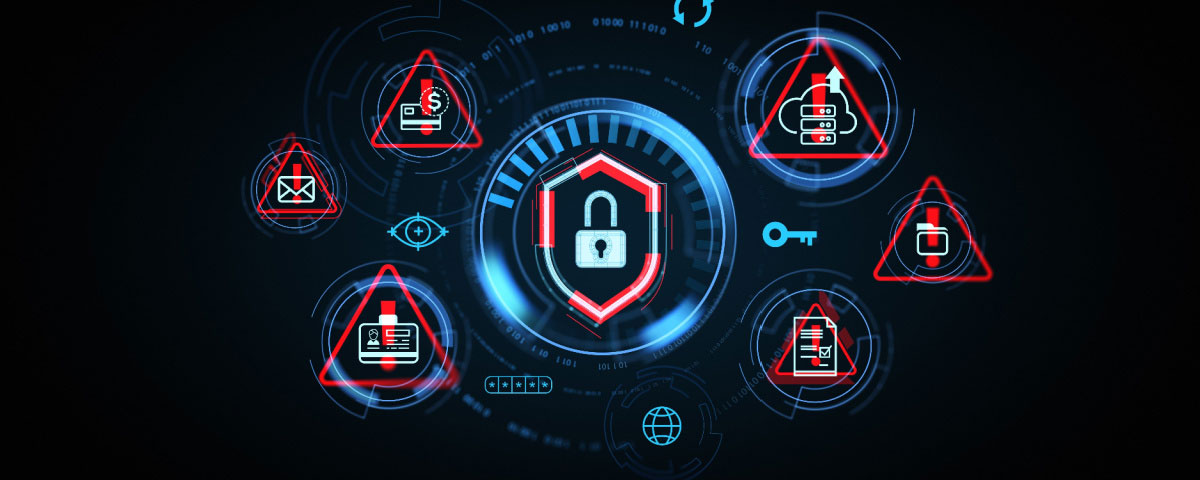October marks Cybersecurity Awareness Month, an ideal time to take a step back and assess whether your organization’s cybersecurity strategy is still effective.
With ransomware attacks, phishing scams, insider threats, and AI-powered exploits on the rise, even organizations with a decent security setup can fall behind. A cybersecurity plan that worked two or three years ago might already be putting your business at risk today.
If you have not revisited it in a while, there is a reason for concern. In Q1 2025, businesses faced an average of 1,925 cyberattacks per week, up 47% from last year. Ransomware alone jumped up 126%, and most of these attacks were not caused by technical flaws, but by human error, which is linked to about 74% of breaches.
At the same time, 82% of security incidents now involve cloud-based data, a sharp reminder that business operations have changed and so have the risks.
Here are six signs your cybersecurity strategy is outdated and how to modernize your defenses before it is too late.
1. You still rely on Antivirus Alone
Why it is outdated: Traditional antivirus software only protects against known threats. Today’s attackers employ advanced tactics, including fileless malware, zero-day exploits, and ransomware-as-a-service, all of which easily bypass legacy tools.
What to do: Upgrade to a next-gen Endpoint Detection & Response (EDR) or Extended Detection & Response (XDR) solution that uses AI and behavior-based detection to catch suspicious activity in real time.
Many businesses still assume that having antivirus software means they are safe. But today’s cybercriminals are smarter, faster, and using more sophisticated tools than ever before.
2. Cybersecurity is “Just IT’s Job”
Why it is outdated: Cybersecurity will never be just a technical problem. It is a business-wide issue. Most breaches start with human error: a single click on a phishing email, a weak password, or misconfigured access.
What to do: Foster a security-aware culture by providing regular training, running phishing simulations, making cybersecurity part of onboarding, and ensuring leadership champions the cause.
Thinking of cybersecurity as just an IT function is one of the most common and costly mistakes businesses make. Without buy-in across departments, even the best technology cannot stop a breach caused by everyday human decisions.
3. You do not use Multi-Factor Authentication (MFA)
Why it is outdated: Passwords are no longer enough. A single stolen credential, whether leaked in a breach or guessed through social engineering, can open the door to your entire network.
What to do: Deploy MFA across all systems, especially:
- Email platforms
- VPNs
- Cloud applications
- Admin portals
This simple layer of protection dramatically reduces the risk of unauthorized access.

4. Your Incident Response Plan is Collecting Dust
Why it is outdated: Many organizations have an IR plan, but few have tested it. In a real crisis, vague checklists and outdated contacts will not help.
What to do: Preparedness turns chaos into control by reviewing your plan regularly, assigning clear roles and responsibilities, and simulating breach scenarios to see how your team reacts.
An untested plan gives a false sense of security. If your team cannot execute it confidently in a high-stress moment, it might be doing more harm than good.
5. You do not Monitor your Network 24/7
Why it is outdated: Cybercriminals do not work regular business hours, and attacks can escalate within minutes at any time.
If no one is watching your systems outside business hours, you might not detect a breach until it is too late.
What to do: Invest in 24/7 threat monitoring via:
- A Security Operations Center
- Managed Detection and Response (MDR) provider
- A robust SIEM (Security Information and Event Management) solution
Most breaches are not discovered until days or even weeks later, long after the damage is done. Without round-the-clock visibility, your organization is essentially flying blind during off-hours.
6. You have not Reassessed your Risks Lately
Why it is outdated: Business environments change rapidly, with new remote workers, cloud tools, vendors, and data storage practices introducing additional vulnerabilities.
What to do: Schedule regular cybersecurity risk assessments, especially after any major IT or operational change, before onboarding new vendors or tools, and annually, as part of your strategic planning.
Risk is not static. If you are not actively re-evaluating your threat landscape, you are likely overlooking exposures that didn’t exist six months ago.
Take Action this National Cybersecurity Awareness Month
Cybersecurity is a continuous process. This October, use National Cybersecurity Awareness Month as a reminder to take a fresh look at your defenses and ask:
Is our strategy to keep up with the threats we face today?
If any of these six signs sound familiar, it is time for an update, and we can help. Let our team at AIS evaluate your current posture and recommend practical steps to strengthen your security, no pressure, just clarity.


